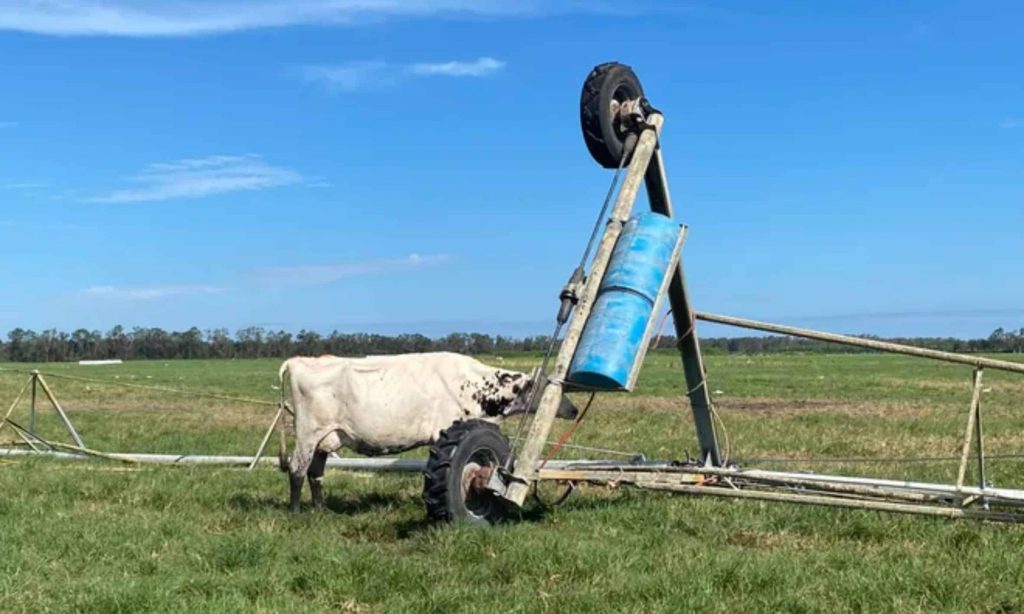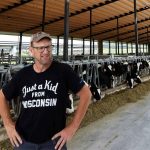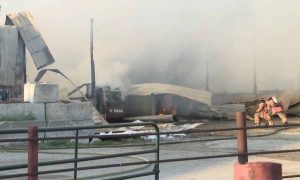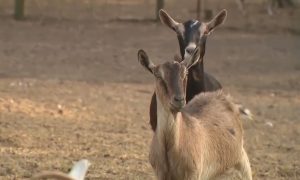
As soon as it was safe, hours after Hurricane Idalia tore into Florida’s Gulf Coast, Johan Heijkoop rushed to check on his two dairy farms in Lafayette County.
He couldn’t even see the driveway through all the downed trees and debris, but he knew the electric fences had stopped working because the herd had run out of the barn and into the pasture.
“Your barns are ripped up, and it’s eerily quiet, except for the cows, because the cows are just kind of going everywhere,” Heijkoop said.
“They are mooing, and you can tell they’re highly, highly stressed, and it’s intense,” he added.Heijkoop, part owner of two dairies in Mayo, is still seeing the effects of the Category 3 hurricane a month later. Currently he has eight burn piles going, still trying to get rid of tree debris. But more importantly, and costly, are the repairs to structures that were damaged during the storm and the drop in milk production from his 2,000 cows who are still recovering from the stress of the hurricane.
In previous hurricanes Irma, Michael and Ian, dairy farmers did not receive federal aid for revenue losses and repairs. Dairy farmers last received federal help from the United States Department of Agriculture in 2004 after four back-to-back hurricanes hit Florida, said Ray Hodge, executive director of United Dairy Farmers of Florida.
The state has created a bridge loan program to help businesses after Idalia, which Heijkoop has applied for and is waiting on approval. Florida Gov. Ron DeSantis, who is currently running to be the Republican candidate for president, allocated $20 million for the Florida Small Business Emergency Bridge Loan Program.
The program set aside $5 million for agricultural small businesses, and each can receive a loan of up to $100,000, but it’s not enough, farmers say.
Over half of the milk production in Florida comes from farms in Jefferson, Gilchrist, Lafayette, Madison and Suwannee counties, the hardest hit by Idalia, where Hodge has calculated that the damages total $7.2 million and counting.
“We don’t have a year to get help from this,” Heijkoop said. “We need action. We need it immediately.”
‘They’re not happy cows’
Seventeen farms suffered extended power outages and damage to housing and cooling systems for livestock, which stressed out herds and led to an immediate 10% to 15% reduction in milk output. The effects of that stress on the dairy cows is expected to last for months.
“They’re not happy cows,” said Hodge. “It’s very similar to a human, your body feels that stress. For a cow, it’s the same thing.”
Heijkoop said milk production is back up to 85% of what it was pre-hurricane, but his cows are still feeling the effects. A cow has to have a calf to produce milk, and the stress of the storm has led to disruptions in the gestational cycle, including the loss of calves late in pregnancy.
“To recover from that is practically impossible,” he said.
The counties hardest hit by Hurricane Idalia are mostly rural and supply the state with much of its agricultural needs.
In nearby Suwannee County, Idalia pummeled the county’s agriculture industry, its chief economic engine, leaving farm equipment, fences and crops in shambles.
Larry Sessions, city manager of Live Oak, estimated that Idalia killed millions of chickens and that an untold number would have to be euthanized. The storm wrecked numerous chicken houses and knocked out electricity to cooling fans, leaving them to die in the heat.
“The impact here will be billions of dollars because the infrastructure that these farmers have plus the crops they have in the ground for their livelihood — it’s all affected,” he told the USA TODAY FLORIDA-Network in early September.
In 2017, Suwannee County sold $258 million worth of agricultural products and ranked seventh in the state, according to the USDA’s Ag Census.
That same year, Suwannee, Madison and and Lafayette counties together generated $432 million worth in agricultural products sold.

Already at tight margins
Before the pandemic, dairy products led the state’s livestock commodities; in 2020, the dairy industry made $486,492,000 in sales, according to the Florida Department of Agriculture and Consumer Services.
In 2021, Florida made $547 million in dairy exports, but COVID-19 shuttered struggling dairy farmers in the state. This year, those that remained were still trying to rebuild their farm operations, Hodge said.
“Something like this comes along when you’re already at tight margins, and this can further keep you from being able to survive,” Hodge said.
Coupled with low milk prices, some family dairies are generating little to no profits.
After the hurricane, Heijkoop said once the generators kicked in, the dairies went back into production. On top of the seven-days-a-week work that’s required to run a dairy, Heijkoop, his 30 employees and volunteers were busy putting the farms back together.
Dairies don’t have the luxury to sit and wait for aid, he said.
“There’s not as many people that live here as there are in Central Florida, completely understand that. But those people are getting their food from here. We need to make sure that we do not forget that,” he said.























